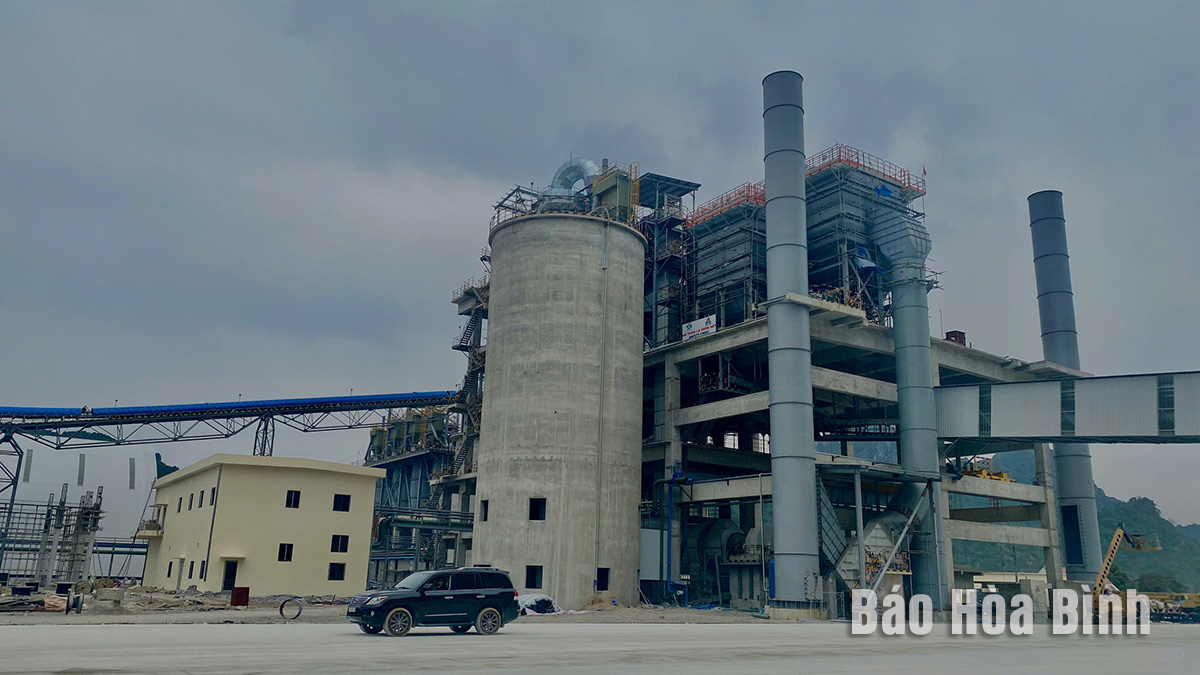



With a designed capacity of over 2.3 million tonnes of cement per year, the plant integrates modern and advanced technology in building material production.
Aiming to establish a green, digital, and highly efficient cement plant, the project incorporates state-of-the-art technology to optimise production efficiency, minimise emissions, and meet stringent environmental standards. Key technology partners include globally renowned brands such as Sinoma Tianjin, Polysius, Ha-ver & Boec-ker, and ABB.
According to Luu Minh Ngoc, Deputy General Director of the Xuan Khiem Group JSC, the plant applies an advanced production system with energy consumption below 680 kcal/kg of clinker and electricity usage under 40 kWh per ton of clinker and 28 kWh per tonne of cement.
The plant also employs co-processing technology, utilising waste heat for electricity generation, and reducing NOx and CO₂ emissions, in line with green cement production standards.
In addition to advanced technology, the plant benefits from abundant limestone and clay reserves, ensuring a stable and high-quality raw material supply. Resources extraction is managed in a scientifically controlled manner, strictly adhering to sustainable development standards.
Ngoc emphasised that the Xuan Khiem Group is committed to investing heavily in environmental impact reduction measures, adopting modern technology to minimize emissions, conserve energy, and promote resource recycling. At the same time, the company is working closely with local authorities and relevant agencies to ensure safe, efficient, and environmentally friendly plant operations.To ensure project progress, key construction components are being expedited.
Le Xuan Phuong, Chairman of the Ngoc Luong Commune People's Committee, remarked the project is crucial for both the province province and the local community. In addition to creating thousands of jobs, the project will help develop infrastructure and improve economic conditions. The group is closely monitoring its implementation to ensure compliance with regulations and prioritise environmental protection for sustainable development.
As a major industrial project led by the Xuan Khiem Group, the plant is expected to significantly drive local economic growth. Once operational, the plant will generate thousands of jobs and position the province as a key cement production hub in northern Vietnam.
Equipped with high-capacity production systems, including roller mills, a seven-stage cyclone preheater kiln, and roller and ball mills, the plant will offer a diverse range of cement products, including PCB 40 bulk, PCB 40, PCB 30, and premium plastering cement, catering to both domestic and international markets.
Ngoc added that the plant is not just an industrial project but also a commitment to sustainable development. The group aims to bring significant economic value to the region while ensuring environmental standards and job creation. Throughout the project, the company will continue to collaborate closely with local authorities to ensure effective and safe implementation./.
Photo:The Xuan Son Cement Plant project, with a total investment exceeding 5 trillion VND (more than 196 million USD), is under development on a 40-hectare site in Ngoc Luong commune, Yen Thuy district.